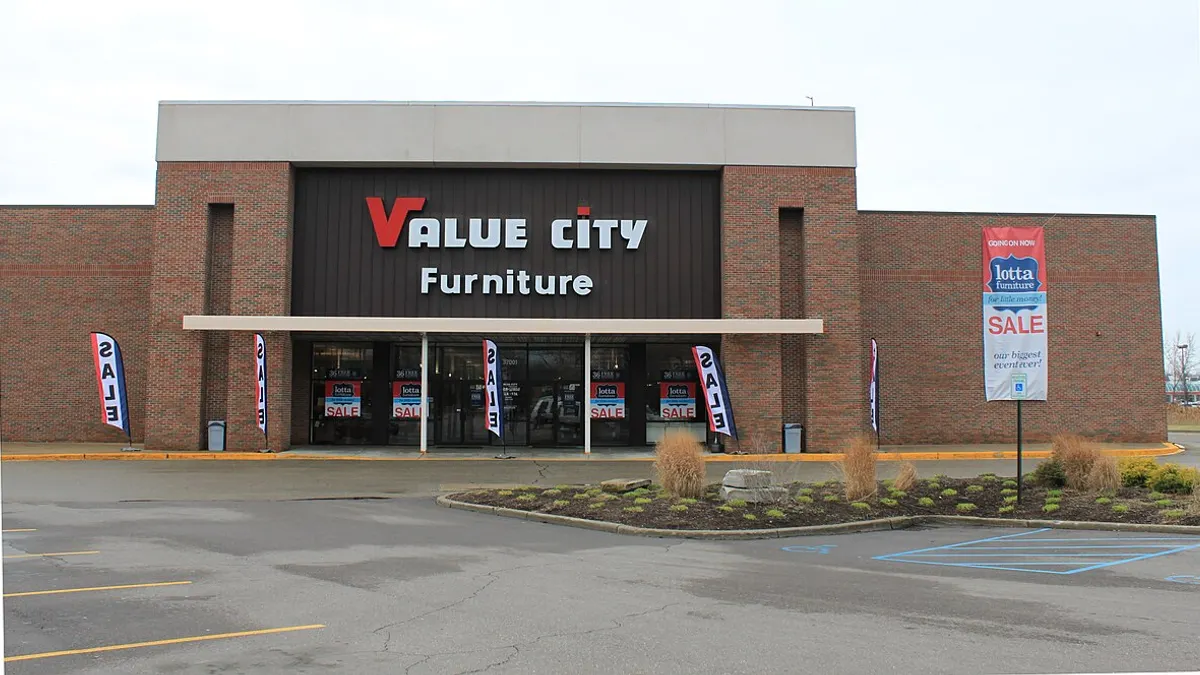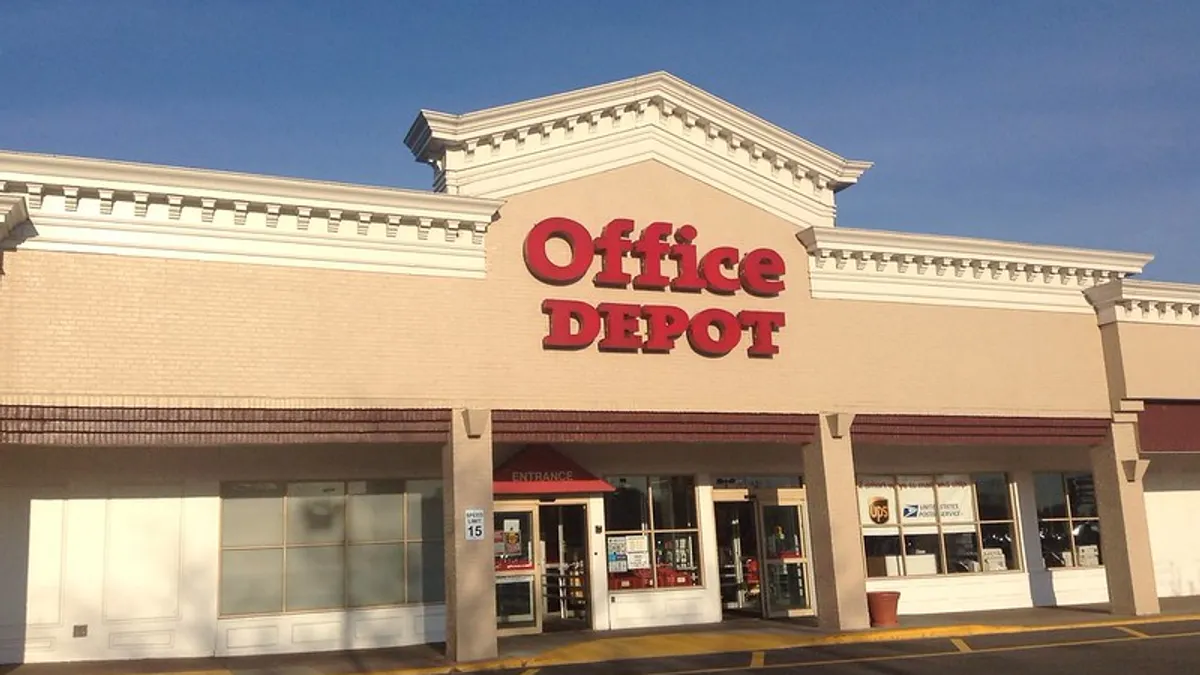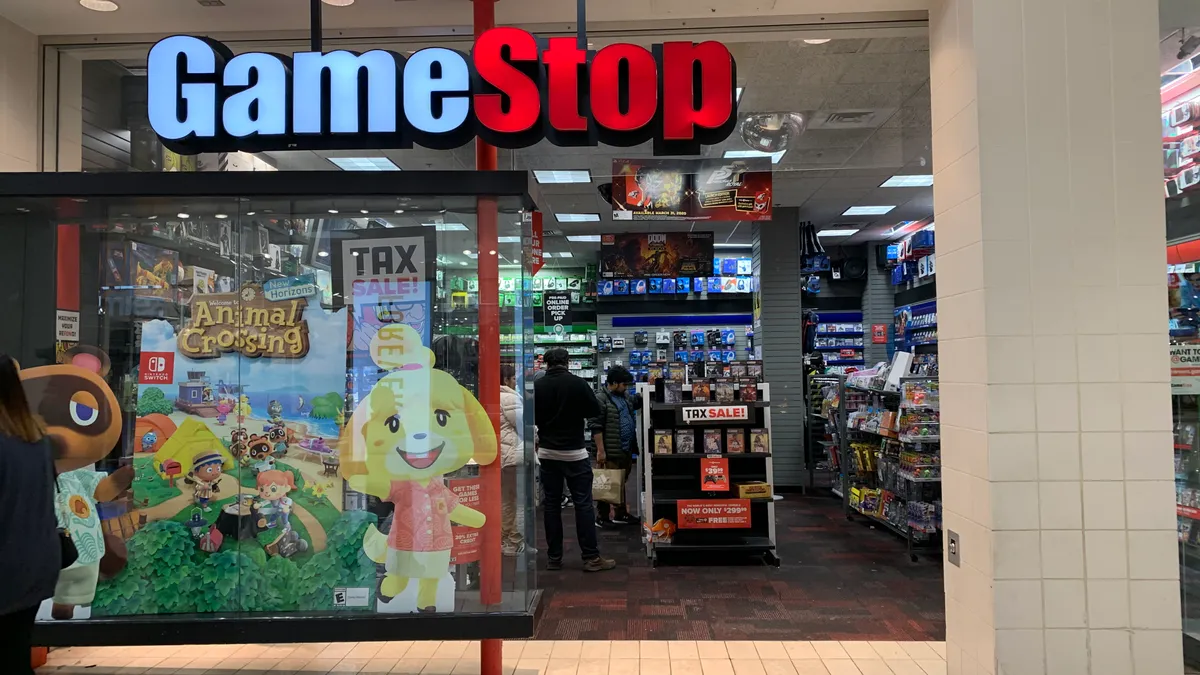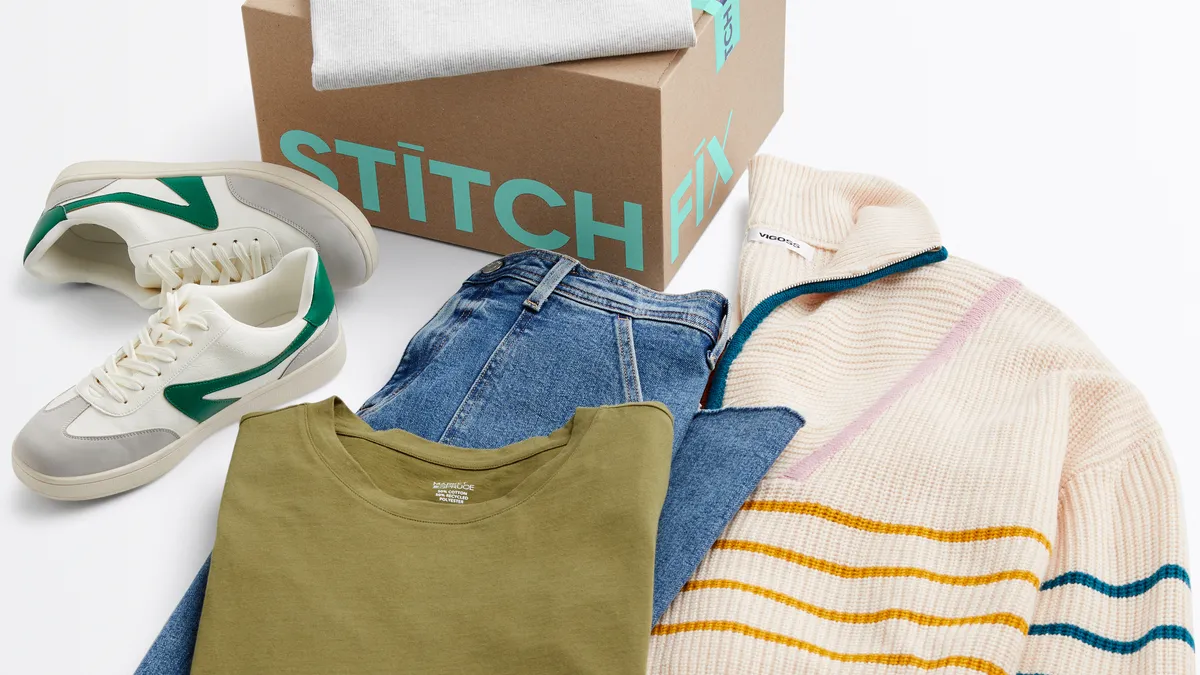There was a time when having a pet was more of an afterthought for your average American family. Either it wasn't worth the hassle, or it took up too much time and money. And certainly, pet owners weren't going to extremes. Who wants to spend their hard-earned cash on organic dog food anyway?
Times have changed and now, the answer to that last question is: "lots of people." That shift has led to the launch of a good many subscription boxes personalized for your favorite pooch, including Pupjoy, Pooch Perks, Surprise Pawty, the Dapper Dog Box and BarkBox, the last of which was founded in 2012 and currently has 500,000 subscribers, a 95% retention rate (impressive considering nearly 40% of customers cancel their subscription services) and a 70% year-over-year revenue growth rate, according to the company.
How? Because pet retail itself is growing massively, Phil Chang, a retail expert at Hubba, an e-commerce platform for small- to medium-sized businesses, told Retail Dive.
"It's on fire," Chang said of the market. "It's grown by conventional standards, with all the categories that get tracked, something like 5-6% a year for the last seven or eight years."
BarkBox itself has raised $77 million in funding and shipped over 10 million BarkBoxes and 70 million toys and treats to date. The secret to their success is an emerging class of devoted pet owners, dedicated customer service and personalization efforts, a lack of competition and some serious room for growth.
The emergence of the 'pet parent'
If you're in the business of pet retail, you don't talk about "pet owners" — you talk about "pet parents," the growing number of consumers who consider their dogs close to human and spend their money accordingly.
The majority of those owners in the United States are millennials, who lay claim to 35% of pets in a country that has over 84.6 million pet owners. According to a study by Zulily emailed to Retail Dive, 75% of consumers in their 30s own a dog and more than 50% own a cat, well above the nationwide numbers of 50% for dogs and 35% for cats.
"We stumbled into this change in the world where dogs are no longer considered pets that lie outside in the garden, but these are now part of our family."

Henrik Werdelin
Co-Founder of BarkBox
Henrik Werdelin, co-founder of BarkBox, attributes much of their success to this growing segment of the population that sees dogs, especially, as more than just a possession. In fact, 82% of millennials think of getting a dog as part of starting a family, per Zulily.
"We stumbled into this change in the world where dogs are no longer considered pets that lie outside in the garden, but these are now part of our family," Werdelin told Retail Dive. "These are now children. They sit by the dining room table and they lie in our beds."
Werdelin notes that before BarkBox, there just weren't very many retailers catering to that segment and creating an experience meant to be enjoyable for both the dog and the owner. But there are plenty of pet owners who are both willing to spend the extra cash and actually want to if it means making their pet happy.
Zulily's study found that in 2016, 42% of consumer spend in the category was on pet food, but $14.71 billion was spent on accessories like collars, toys and beds. In addition to that, 92% of millennial pet owners buy their pets gifts and over half of them do so every single month — not bad numbers for a company like BarkBox, which is actively trying to get customers to treat their dogs every month. Kerry Gibson-Morris, vice president of merchandise at Zulily, said in emailed comments that, "Beyond apparel, we've also discovered that millennials are looking for products that incorporate their pets into their daily routines, from dog umbrellas, to accessories that take the perfect pet selfie, to a yoga mat for your cat."
"They've tapped into that market of consumers that really don't see the difference between a kid and a pet," Chang said, noting that pet parents go far and beyond the "basic set of needs" as a result. "Dog food isn't dog food anymore. It's gluten free, it's grain free, it's raw, it's human grade but made for dogs."
Indeed, BarkBox manufactures 90% of their own toys and treats, and when buying from outside brands, the company pays particular attention to making sure all products are organic, come from a good source and — if they're edible — are made in the U.S. More than that though, Werdelin says the company is focused on creating something that will be fun and engaging for both the dog and the owner.
"We take a lot of inspiration from toys for kids, where you need to make something that really works for the kid, but it's the parents who are purchasing it, so you need to do something that is also for them," Werdelin said. "So for us, it's that shared story."
Customer service and personalization
The BarkBox model is based on a lot more than just the propensity of millennials to overspend on their pets, though. Behind all the squeaky toys and stuffed ducks, there's a good deal of science at work, which ensures that a customer's Australian Shepherd gets toys that match its play style rather than those more befitting of a Greyhound.
According to Werdelin, BarkBox segments dogs and their owners into different categories depending on what type of dog it is and how they like to play, allowing for a high level of personalization. Those categories could range from "defluffers" to "heavy chewers" to "squeaker seekers," and each of those preferences would result in different toys every month.
"All of this experiential retail that we're talking about, it doesn't work unless you're hyper focused on the customer and you're hyper focused on their needs."

Phil Chang
Retail Expert at Hubba
"Our first stakeholder is the dog, so everything we do has to really be something that is created for making the dog happier," Werdelin said. "We spend a lot of time figuring out, 'what are the best squeakers,' and 'what is the length of the cloth on the material' and understanding how dogs play so we can support their play style."
This kind of DNA reinforcement is getting more and more popular in the pet retail sector, according to Chang, who noted that retailers are increasingly making products based on a dog's natural traits and play habits — a level of curation that makes companies like BarkBox so successful.
"All of this experiential retail that we're talking about, it doesn't work unless you're hyper focused on the customer and you're hyper focused on their needs," Chang said. "Pet is a really good category because it's easy — it's a dog, it's not a mom who's 18-32, college educated and has two kids."
While that level of personalization might seem over the top from an outsider's perspective, it's something that consumers are looking for across the board. Last year, a study by Segment found that 71% of customers were frustrated at the lack of a personalized shopping experience, but 75% of consumers in a recent study said that some personalization tactics were too creepy for comfort, demonstrating how important it is for retailers to get it right.
That's where customer service comes in. According to Werdelin, their customer service unit is one of the biggest teams at the company. They do everything from solving basic problems to helping customers relocate to different parts of the country, and they also make a point of interacting with just about everyone who reaches out to them on social media — an important platform for the upcoming Gen Z demographic, 80% of whose purchases are influenced by social platforms.
"If you just want a soft touch with us, then you can follow us on social and interact with us there," Werdelin said, explaining that their social platforms are full of dog memes that customers like and comment on. "If you want to have a more in depth conversation, you can email or call or text us and we will have a conversation about anything you want about your dog."
Customer service is actually a big deal for many pet retailers — Chewy included — ostensibly because they fill the role of both retailers and experts, with owners reaching out about the best products for their pets, along with other advice.
Lack of (good) competition
It doesn't hurt that the rest of the pet retail sector isn't up to scratch. Unlike other retail sectors, pet tends to be less mainstream, leaving room for more boutique players and startups like BarkBox, Chang said. And while PetSmart and Petco are prominent, even those companies don't control the market the same way Walmart owns the rest of retail.
That lack of competition allowed players like BarkBox to sneak into the sector, create a better experience and disrupt the industry, according to Chang. At the root of that disruption is the company's dedication to data, which goes above and beyond what most retailers are willing to investigate.
"They actually track doggie behavior and doggie activities and what dogs love — things that we kind of snicker over … and the curation that they get out of those data points is amazing."

Phil Chang
Retail Expert at Hubba
"They're serious enough that they do things that most of the data community might find laughable," Chang said. "They actually track doggie behavior and doggie activities and what dogs love — things that we kind of snicker over … and the curation that they get out of those data points is amazing."
The company also holds "Open Bark Nights" — comedy shows that customers and employees can bring their dogs to — along with other dog-centered events, all in the name of forming a personal connection with customers. In many ways, BarkBox's approach mirrors that of a lifestyle brand — they create content centered around pet ownership as a lifestyle, host events that enable that lifestyle and ultimately offer a service meant to appeal to that specific subset.
It's not just the pet sector where lifestyle content is hitting it big with shoppers, though. Younger consumers especially are interested in more brand interaction and companies like Outdoor Voices and REI are increasingly using lifestyle-related content to form closer relationships with their customers. The only difference for BarkBox is that the content revolves around dogs and their owners. But at the end of the day, it's the pet owners who are buying, not the dogs.
"For some reason before we came around, things weren't designed also for the human."

Henrik Werdelin
Co-Founder of BarkBox
"For some reason before we came around, things weren't designed also for the human," Werdelin said, commenting that old dog toys weren't very visually appealing. "So what we do is we create something that hopefully has a nice aesthetic so that it fits into your living room, but it also has a little bit of a story that allows you to have an interaction with your dog around this product you just bought for them."
Those "stories" could be anything from a pirate-themed box to the very timely "Dognald Trump" and "Hillary Kitten" toys the company came out with during the election. In either case, consumers are given more of a personal investment in their dogs toys and treats — something other pet retailers just hadn't prioritized in the past.
Room for growth
Dog subscription boxes aren't the endgame for BarkBox — or pet retail, for that matter. Back in August, for example, Werdelin's company partnered with Target to sell products through their stores, and Werdelin says BarkBox is "actively in conversations" with more retailers. The company also has plans for new, inventive dog toys and "entertainment-based products," though Werdelin did not offer any details.
"As you've seen us go from BarkBox to BarkShop to then retail, I think you will see us increasingly looking at new channels and new types of products within those channels," Werdelin said.
From Chang's perspective, though, pet retail's got something much bigger on the way. After all, dogs aren't the only pets in American households. According to Chang, pet retail will grow to encompass cats, birds, small reptiles and eventually even aquarium animals — far beyond what BarkBox does for dogs.
"I think pet is just starting," Chang said, adding that, "The next big thing is going to be cat everything. You're gonna see the cat industry change from kitty litter to allergy free, environmentally-sensitive and responsible kitty litter."
But who would spend that kind of money on a cat?






















